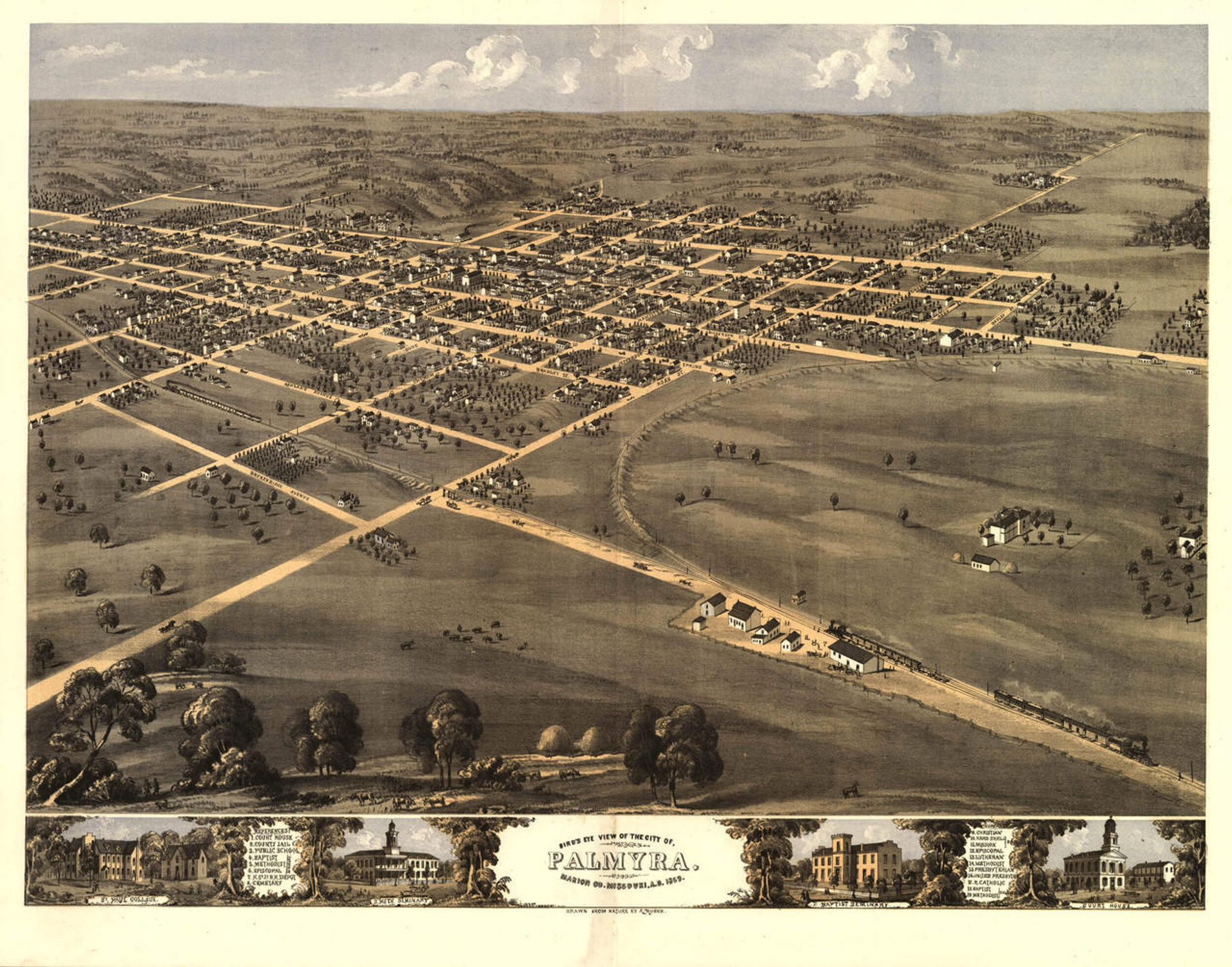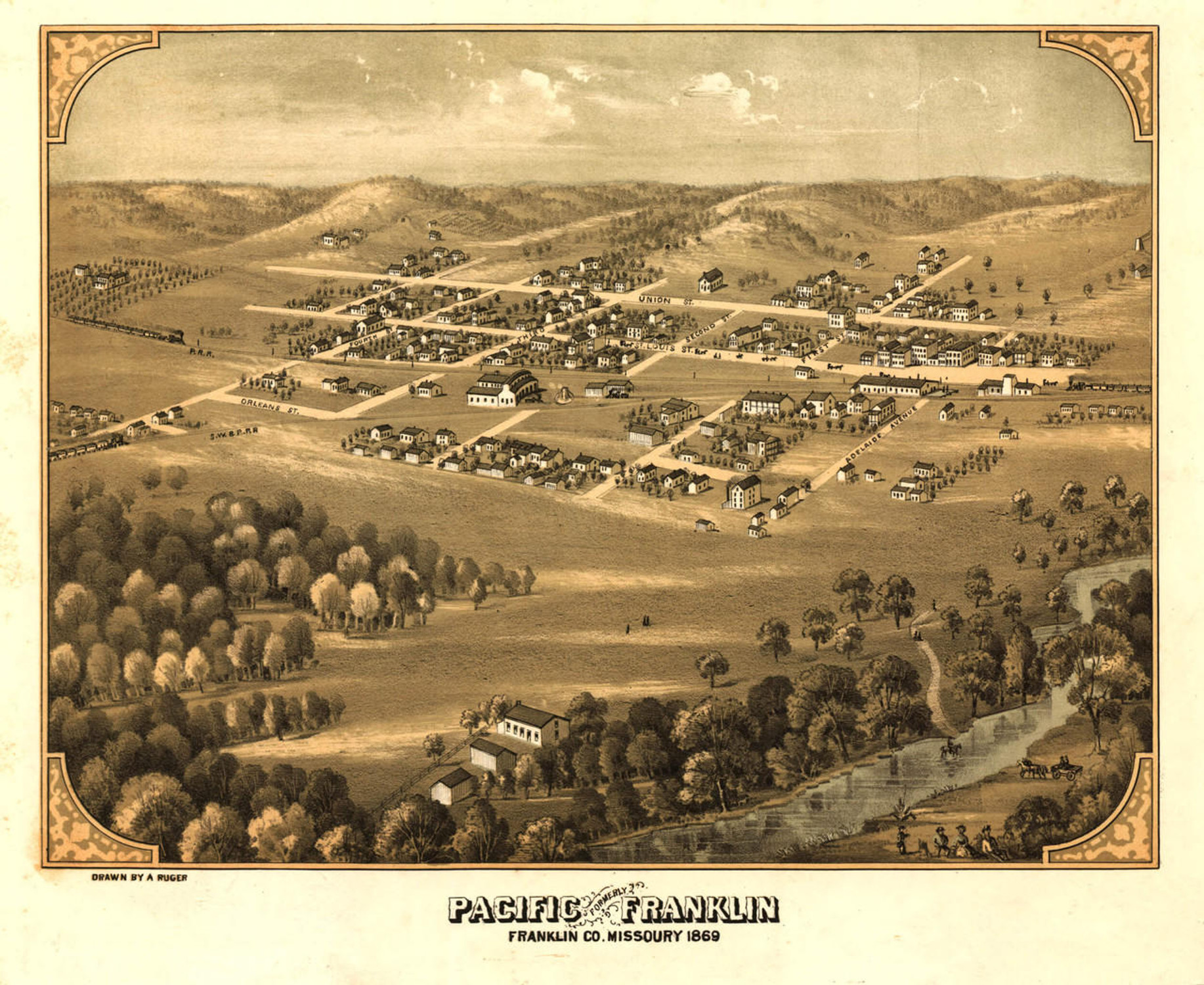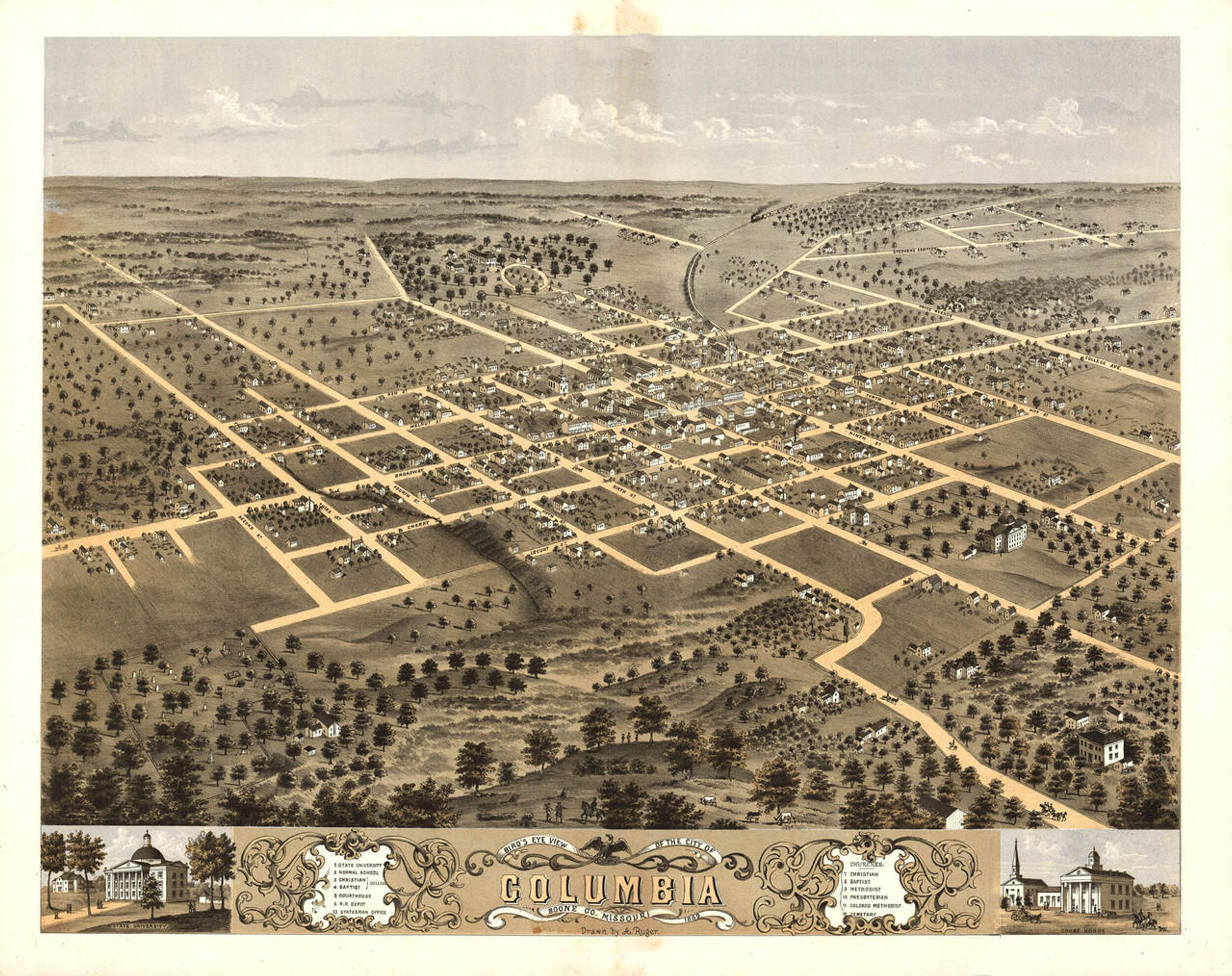
Historic Map - Sedalia, MO - 1869
Description
Bird's eye view of the city of Sedalia, Pettis Co., Missouri 1869. Drawn by A. Ruger.
Reproduction map of the community known as Sedalia, MO, drawn by Prussian born Albert Ruger in 1869. Sedalia is located about thirty miles south of the Missouri River in Pettis County. It was founded by General George Rappeen Smith, who first platted the area in 1860 calling it Sedville after his daughter Sarah or Sed for short. Smith founded the city with designs to attract the Pacific Railroad in its efforts to connect communities. The railroads were built and reached town in 1861. The name was altered to Sedalia, and the town began to prosper.
During the Civil War the military installed a base in the area and Sedalia became a busy hub for both soldiers and railroad workers. After the war many soldiers stayed on. From 1866 until 1874 the city became the railhead for cattle drives from Texas and was brimming with full stockyards near its railway terminus. Sedalia itself became a rough and tumble town with all its cowboys, railroad workers and travelers coming through, and was well known as a center of vice, particularly prostitution. The red light district had numerous prostitutes and houses of ill-repute.
In 1869 local lawyer George Graham Vest was asked to represent a client from nearby Warrensburg, who's hunting dog named "Old Drum" had been killed by a sheep rancher. The man was suing the rancher for fifty dollars, the maximum by law. Vest vowed to win the case or "apologize to every dog in Missouri". During the hearing he made his famous "Eulogy on the Dog". George Vest won the case. A fine orator, Vest had served in the Confederate Congress, but had resigned from that. This case brought him an abundance of attention when it was fought in Warrensburg and over appeal in the Missouri Supreme Court. He later would be elected to the U. S. Senate.
George Graham Vest's "Eulogy on the Dog" is one of the most famous passages in U. S. courtroom history (surviving partial transcript):
"Gentlemen of the jury: The best friend a man has in this world may turn against him and become his enemy. His son or daughter that he has reared with loving care may prove ungrateful. Those who are nearest and dearest to us, those whom we trust with our happiness and our good name, may become traitors to their faith. The money that a man has, he may lose. It flies away from him, perhaps when he needs it the most. A mans reputation may be sacrificed in a moment of ill-considered action. The people who are prone to fall on their knees to do us honor when success is with us may be the first to throw the stone of malice when failure settles its cloud upon our heads. The one absolutely unselfish friend that a man can have in this selfish world, the one that never deserts him and the one that never proves ungrateful or treacherous is his dog.
Gentlemen of the jury: A mans dog stands by him in prosperity and in poverty, in health and in sickness. He will sleep on the cold ground, where the wintry winds blow and the snow drives fiercely, if only he may be near his masters side. He will kiss the hand that has no food to offer, he will lick the wounds and sores that come in encounters with the roughness of the world. He guards the sleep of his pauper master as if he were a prince. When all other friends desert, he remains. When riches take wings and reputation falls to pieces, he is as constant in his love as the sun in its journey through the heavens.
If fortune drives the master forth an outcast in the world, friendless and homeless, the faithful dog asks no higher privilege than that of accompanying him to guard against danger, to fight against his enemies, and when the last scene of all comes, and death takes the master in its embrace and his body is laid away in the cold ground, no matter if all other friends pursue their way, there by his graveside will the noble dog be found, his head between his paws, his eyes sad but open in alert watchfulness, faithful and true even to death."
The map shows lively scenes of railroad, carriage and pedestrian traffic. It features inset illustrations of Ives House, Sedalia Opera House, G. R. Smith's Hall and Free School.
Complete reference list below.
Features numbered references to the following locations:
- Court House
- Jail
- Public School
- Engine House
- P. R. W. Depot
- Cemetary
- Baptist Church
- Christian Church
- Congregational Church
- Episcopal Church
- Methodist Church
- Presbyterian Church
- Roman Catholic Church
- Gas Works
Materials
Archive Paper

Premium fine art paper that provides accurate color reproduction with high-contrast, high-resolution print output and maximum image permanence. A high-quality print ready for framing.
More
- Museum quality paper for high-quality fine art.
- Ultra smooth, neutral white matte finish.
- Heavy-weight 230 gsm, 9.5 mil thickness.
- Printed with pigment inks for longer print life and enhanced fade resistance.
- Pigment based Canon LUCIA inks provide smooth tones and rich colors in fine, precise detail.

Made In The USA

School Purchase Orders





